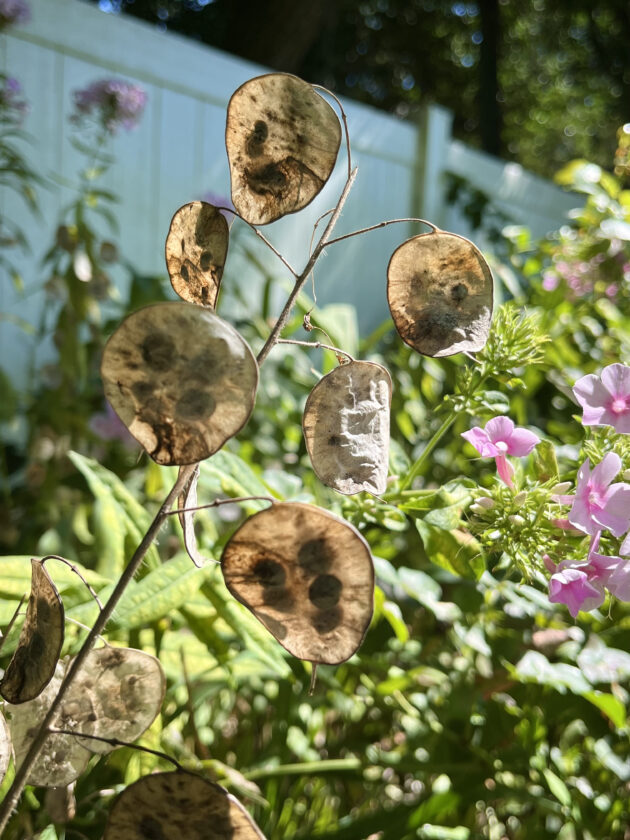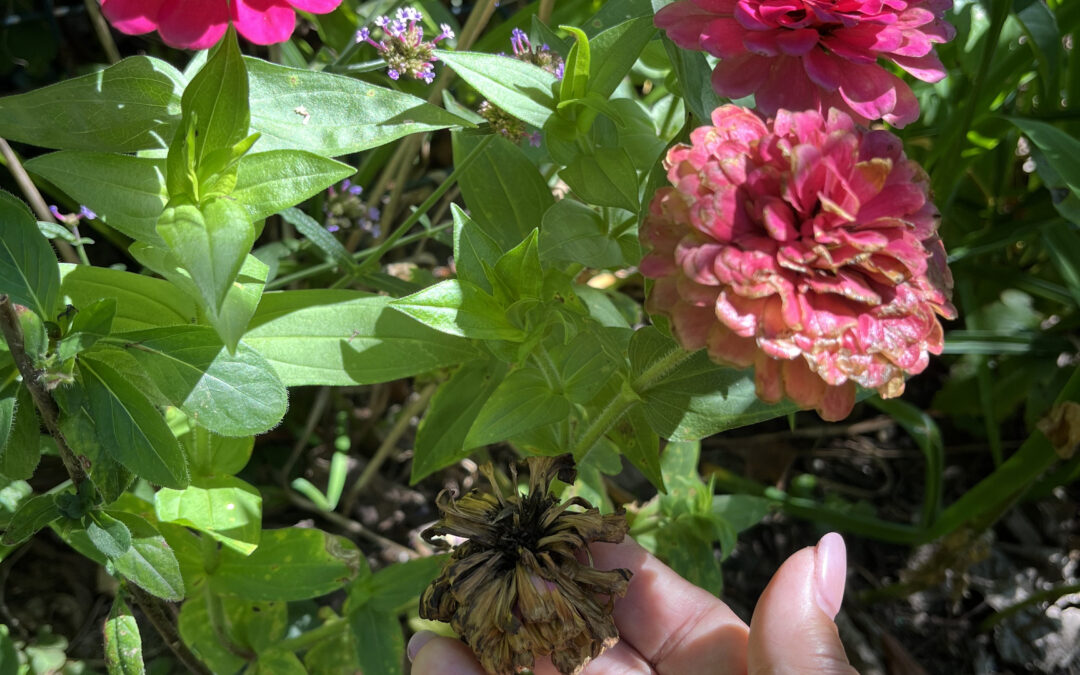Let It Grow
As you notice the flowers in your garden begin to fade, you can look to the future and collect seeds from your plants now for a free garden next year. Growing plants from seed can be very gratifying, but using seeds that you have harvested from your own plants takes gardening to the next level.
In some cases, growing plants from seed can be a daunting endeavor. However, others germinate and grow so easily that you will wonder why you haven’t tried this years ago. Certain flowers, like zinnias, marigolds, four o’clocks, and honesty, make gardening look like a cakewalk.
Let’s start with zinnias. These colorful annuals are a gardener’s delight, attracting birds, bees, and butterflies to your garden. Once you sprinkle a packet of zinnias in your garden, you will be smitten with their unending blooms. Collect the seeds from only a handful of zinnia flowers, and you will find yourself with a limitless supply. To make sure the seeds are ready to harvest, you must wait until the flowers are completely withered, brown, and crispy. While it is best to allow the flower heads to dry out naturally on the stem, if it hurts your eyes to see brown, dried-out flowers in your garden, you can clip them. Once cut, keep the flower heads in a dry area to make sure the seed has fully matured. You can test the seed heads by giving a little tug. If the seeds are ready, they should fall out easily. But if they give resistance, wait a few days or weeks longer for the flowers to completely dry out.
Marigolds are also easy to grow from seed, and their strong scent repels certain “bad” insects and pests. Plant them as a wall to guard your tomatoes and other vegetables. As the flowers fade and dry out, you can prick off the flower head. Once completely dried, pull apart the flower to reveal the numerous seeds. Each flower head can contain up to 30-35 seeds. After the seeds are collected and fully dried, you can store them in a dry, cool place until the following spring.
Follow the same basic method with purple coneflowers (Echinacea). The petals will fall off of the flower, and the thistle-like center will turn dark brown and become hard and spiky. If they are soft or pliable, they are not ready. The word “echinacea “is derived from the Greek word for hedgehog, and true to their name, these seeds will become very prickly when they are ready to harvest. However, coneflower seeds should be treated a little differently. These perennials need a period of cold (called cold stratification) before they will germinate. Left to their own in the garden, these seeds would naturally be exposed to all that winter can throw at them. A period of wet, cold, and freezing conditions followed by the warmth of spring will break the dormancy of these seeds, allowing them to germinate at just the right time. You can mimic this cold period by storing the seeds in the refrigerator or freezer for a period of time before spring. They are also perfect candidates for winter sowing, a method that leans into germinating seeds as nature intended.
Honesty plants (Lunaria) are known for their very distinctive seed pods. These spring-blooming biennial plants have purple, white, or pink flowers. After blooming, honesty plants form disc-shaped, translucent seed pods that look like coins. As the seed pods mature, you can see the black seeds inside. Crumble these dried pods to release the seeds, or collect the seed pods to store whole in a mason jar and share with a friend. Make a fun dried arrangement with honesty plants by cutting the dried stems, leaving the unique seed pods intact.

You can also easily collect seeds from sunflowers, cleome (spider flower), and cosmos. Once you start collecting seeds from your garden, you may find that you have exposed yourself to a new sub-section of gardening addiction. Don’t limit yourself to flowers. This spring, I planted tons of cilantro from seeds that I had saved. The previous year’s plants had also self-seeded, and volunteer plants popped up in various pots around my garden. By this July, these cilantro plants were full of dried seeds (coriander), allowing the process to begin anew. I planted some of these seeds a few weeks ago, and now I have little cilantro babies happily growing in my garden. I’m looking forward to a big bowl of homemade pico de gallo.
When harvesting your seeds, leave some for our fine-feathered friends. Certain birds, especially goldfinches, love to eat seeds from our flowers. One of the few goldfinches that I spied visiting my garden this summer was attacking one of my spent zinnia flowers. It was so fun watching him enjoy this flower, and I didn’t mind since I have plenty to spare. Other flowers that goldfinches can also be found devouring are the seedheads of coneflowers, sunflowers, and verbena bonariensis.
Store your seeds in a cool, dry spot with low light. They can be kept in little paper packets, envelopes, or mason jars. Just be sure that they are free of moisture so that they don’t begin to rot or prematurely germinate. Most of all, do not forget to label your seeds. Months from now, you will not remember which seeds you have so lovingly collected. Even if you can expertly identify one seed from another, you will not be able to tell what color they were unless you labeled them right away. Choose seeds from the healthiest plants that are free from powdery mildew or other types of fungus. Over time, you will develop a seed base that has become acclimated to your garden, giving you strong, viable seeds that will allow you to enjoy the full circle of life year after year.
Tammy Thornton lives with her husband, children, and crazy pets while enjoying a life of gardening, cooking, and going to the beach.

















